Nose
Artistic anatomical aspects
 The nose is the most protruding part of the body, and it contributes the most to defining the characteristics of individual faces.
The nose is the most protruding part of the body, and it contributes the most to defining the characteristics of individual faces.
Noses vary by individual, families and racial groups. Noses harmonize with the faces they are part of, and artists seek to express this harmony in proportions.
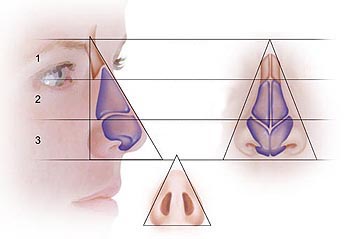 The best known set of proportions is Shadow’s “Canon”.
The best known set of proportions is Shadow’s “Canon”.
There are ideal proportions between the parts of an anatomically normal nose, and also between the nose and the skull as well as parts of the nose and the face – that is, the nose is in proportional harmony with the face. Various anatomical deviations of the nose can upset the harmony of the face.
The nose can be categorized among organs of both sense and respiration.

In addition to these main functions, the nose fulfils important defensive functions, playing a considerable role in adapting the body to the outside world (in a purely physical sense as well as in the immunological defense).
In addition, the nose also plays a role in speech production as well.
The structure of the nose: external nose, nasal cavity, and accessory nasal sinuses.
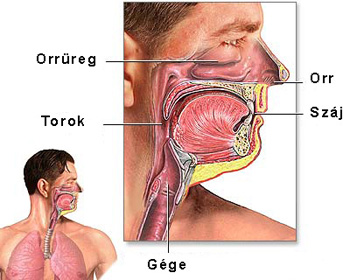 The structure of the external nose.
The structure of the external nose.
The supporting frame of the nose consists of bones, cartilages and connective tissue.
The nose’s blood supply comes from the dorsal nasal artery, originating in the facial artery.
From a clinical point of view (in case of purulent inflammations), the angular vein positioned in the corner of the eye (or canthus) has great importance, connecting the nose to the vein system of the brain stem.
The sensory nerves of the nose are the second branch of the trigeminal nerve, while the motor nerve of the facial (or mimetic) muscles is the facial nerve.
The anatomy of the nasal cavity
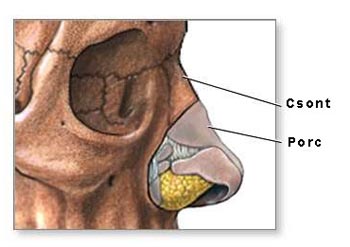 The nasal cavity starts with the nostrils and passes air towards the pharynx as well as the olfactory cells.
The nasal cavity starts with the nostrils and passes air towards the pharynx as well as the olfactory cells.
It is divided in the middle into two more or less symmetrical parts by the nasal septum. On either side of it are the nasal conchae, whose function is to filter, warm up and humidify the air passing through.
The air warming and humidifying function of the nose is provided by its blood vessel rich mucous membrane.
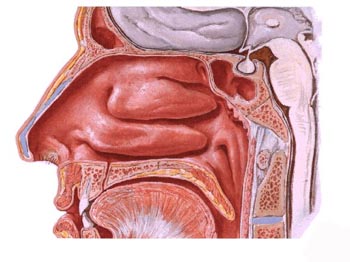 Nosebleeds are often caused by damage to the mucous membrane. The filtering is done by the cilium on the mucous membrane. The accessory nasal sinuses open from the nasal cavity.
Nosebleeds are often caused by damage to the mucous membrane. The filtering is done by the cilium on the mucous membrane. The accessory nasal sinuses open from the nasal cavity.
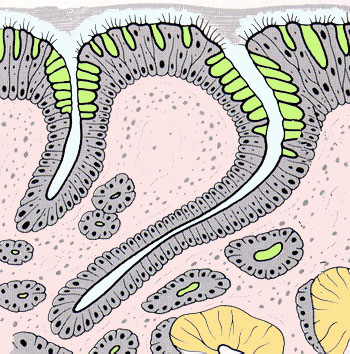 The mucus membrane of the nasal cavity is shared by the accessory nasal sinuses, and all its changes (e.g. inflammation) affect both.
The mucus membrane of the nasal cavity is shared by the accessory nasal sinuses, and all its changes (e.g. inflammation) affect both.
Accessory sinuses are the maxillary sinus, the frontal sinus, the sphenoidal sinus and ethmoid cells.

Normally, the accessory sinuses communicate with the nasal cavity, through which discharge produced in them can freely release.
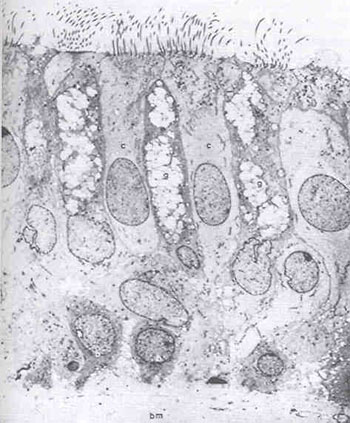 The free flow between the nasal cavity and the acceesory sinuses is greatly aided by the cilium.
The free flow between the nasal cavity and the acceesory sinuses is greatly aided by the cilium.
The accessory sinuses play an important role in speech production, namely, in shaping the timbre like a resonant body.
The cavity of the inner nose is divided into two parts by the nasal septum.
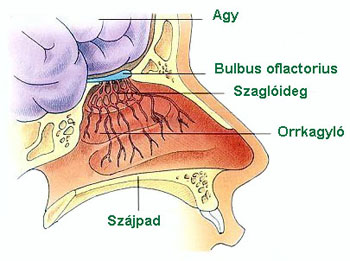 On the lateral wall of the nasal cavity are found the nasal conchae, the nasal passages, the orifices of the accessory sinuses, and the tearduct.
On the lateral wall of the nasal cavity are found the nasal conchae, the nasal passages, the orifices of the accessory sinuses, and the tearduct.
The nasal conchae are covered by mucous membrane that is capable of swelling and function like a radiator: with their extensive surface, they prepare, warm up, filter and humidify the air in the nose.
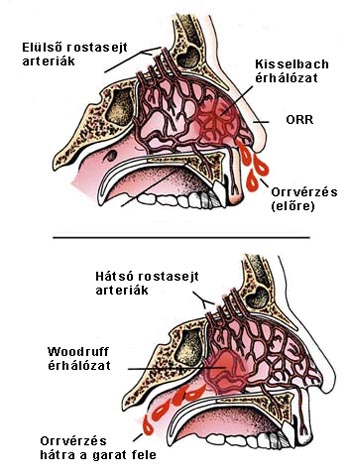
On the ceiling of the nasal cavity can be found the sense of olfaction, the olfactory epitheleium.
Positioned at the front of the nasal septum about 1.5 cm from the nasal orifice is a sanguine capillary system called Kisselback’s area.
A considerable proportion of nosebleeds originate from here.
The anatomy and physiology of the accessory sinuses.
Several sinuses open from the nasal cavity: the maxillary sinus, the frontal sinus, the sphenoidal sinus and ethmoid cells.
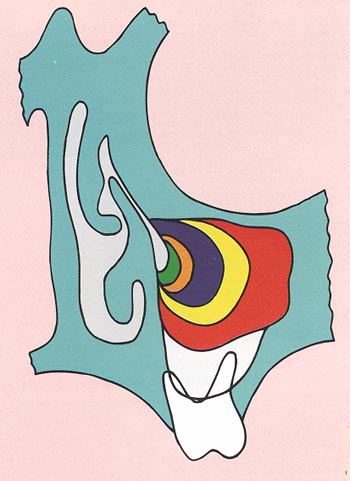 The tympanic cavity also has to be considered part of this system, communicating with the nasopharynx through the Eustachian tube.
The tympanic cavity also has to be considered part of this system, communicating with the nasopharynx through the Eustachian tube.
The system of sinuses develops gradually during the years after birth. In case of abnormal development, some of the sinuses might be rudimentary, or the frontal sinus might be missing completely.

The sinuses are lined with mucous membrane covered with cylindrical epithelium and cilium.
The mucous membrane guarantees the warming up, humidifying and filtering of the air that gets into the nose.
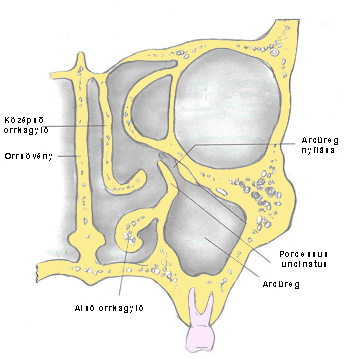
Ventillation through the nose is necessary for a normal functioning of the sinuses, and this is done by small openings.
If these get blocked (due to cold, allergy, polyp, tumor, septal deviation, mechanical obstruction etc.), the ventilation of the sinus suffers.
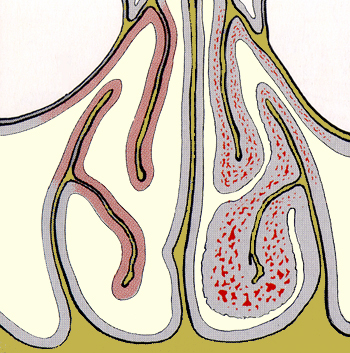 As a result, at the orifices of the sinuses the mucous membrane swells, and the sinuses get blocked, which, in turn, causes a vacuum to develop in the sinuses at first, possibly accompanied by pain.
As a result, at the orifices of the sinuses the mucous membrane swells, and the sinuses get blocked, which, in turn, causes a vacuum to develop in the sinuses at first, possibly accompanied by pain.
Next, watery serum develops on the surface of the mucous membrane and collects in the maxillary sinus (watery nasal discharge).
If the maxillary sinus continues to be blocked and fresh air cannot get into the system, the process worsens and the goblet cells of the mucous membrane start to discharge mucous nasal discharge.
Bacterial superinfection can occur both in the watery and mucous inflammation process, resulting in purulent discharge, facial pain and fever.
Hits: 9862
